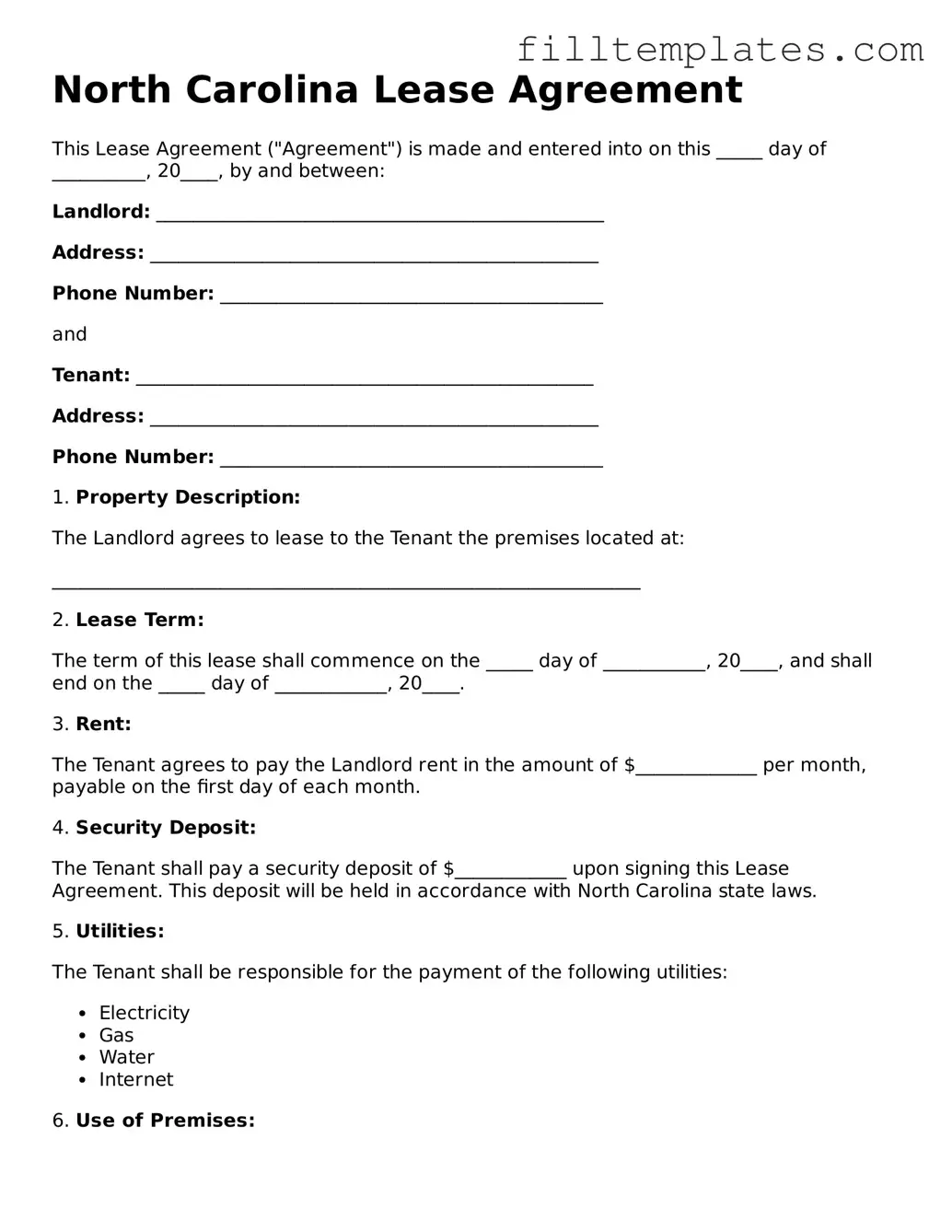North Carolina Lease Agreement
This Lease Agreement ("Agreement") is made and entered into on this _____ day of __________, 20____, by and between:
Landlord: ________________________________________________
Address: ________________________________________________
Phone Number: _________________________________________
and
Tenant: _________________________________________________
Address: ________________________________________________
Phone Number: _________________________________________
1. Property Description:
The Landlord agrees to lease to the Tenant the premises located at:
_______________________________________________________________
2. Lease Term:
The term of this lease shall commence on the _____ day of ___________, 20____, and shall end on the _____ day of ____________, 20____.
3. Rent:
The Tenant agrees to pay the Landlord rent in the amount of $_____________ per month, payable on the first day of each month.
4. Security Deposit:
The Tenant shall pay a security deposit of $____________ upon signing this Lease Agreement. This deposit will be held in accordance with North Carolina state laws.
5. Utilities:
The Tenant shall be responsible for the payment of the following utilities:
- Electricity
- Gas
- Water
- Internet
6. Use of Premises:
The Tenant shall use the premises solely for residential purposes and shall not engage in any illegal activities.
7. Maintenance and Repairs:
The Landlord shall maintain the structural integrity of the property, while the Tenant shall keep the premises in clean and sanitary condition.
8. Termination:
Upon termination of this lease, the Tenant agrees to vacate the premises and return the keys to the Landlord. Any remaining damages will be assessed against the security deposit as permitted by North Carolina law.
9. Governing Law:
This Agreement shall be governed by the laws of the State of North Carolina.
IN WITNESS WHEREOF, the parties have executed this Lease Agreement as of the date first written above.
Landlord Signature: _________________________ Date: ___________
Tenant Signature: _________________________ Date: ___________
Note: Both parties should retain a signed copy of this Agreement for their records.
